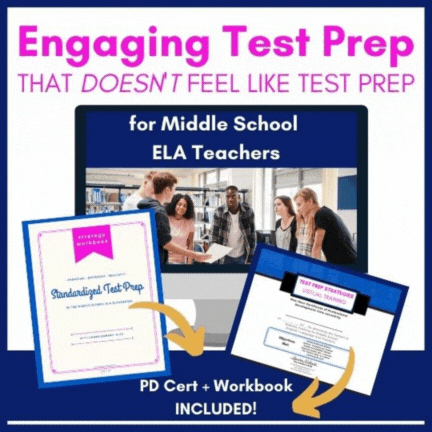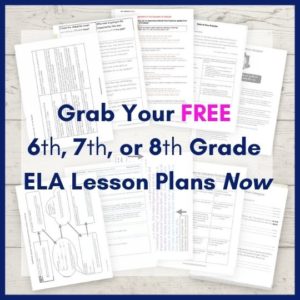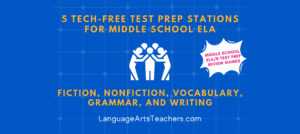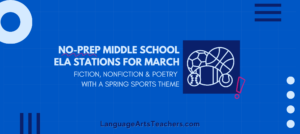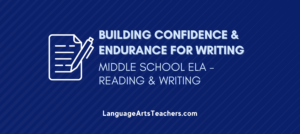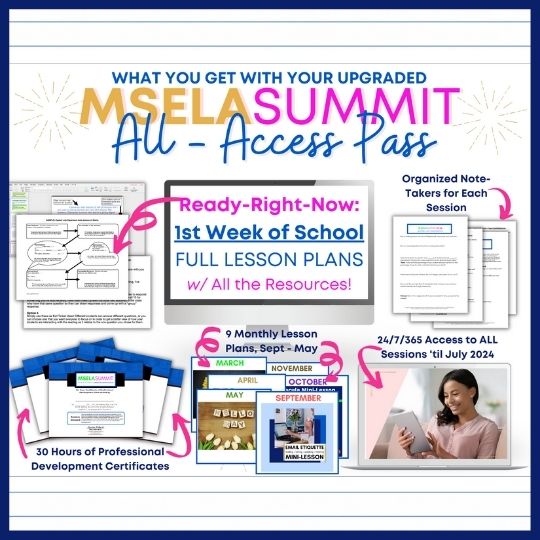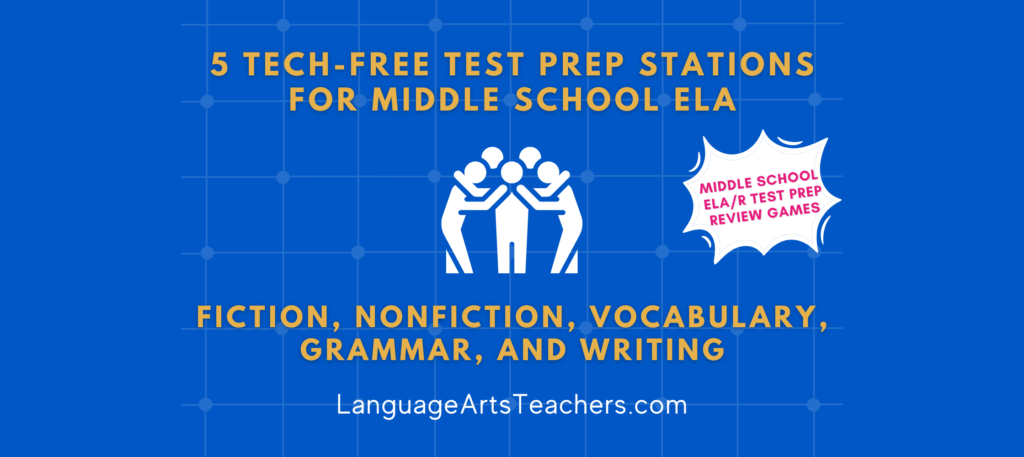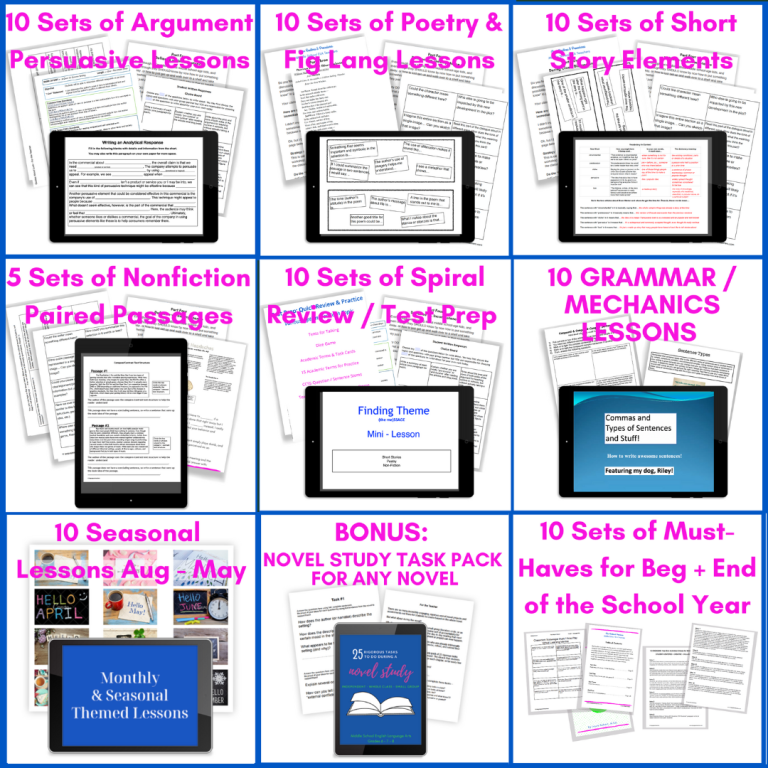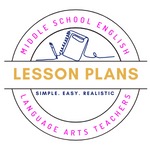The sneaky way I teach grammar without “teaching grammar”
A little trick I love using with my students when I teach a new or unfamiliar (or boring) grammatical concept is that I have them practice, play with, and use that grammar concept without even telling them what it’s called (I tell them what it’s called later).
Basically, we’re talking about “discovery learning” here.
The name of it (appositives, in this case) isn’t what’s most important; my students’ ability to actually use the grammatical concept IS what’s most important, and they’re much more likely to enjoy the process, remember it, and use it on their own this way.
I’ve used this exact process when teaching active / passive voice, conjunctions, sentence variety (complex, compound-complex, etc.) and it works!
That’s what we’re doing here with this “appositive” lesson which helps students learn to use commas correctly.
In fact, the first time students work with appositives in my classroom is as a station activity (I know! I’m not even explicitly teaching it yet!).
I’ll share that exact activity here in a sec, but let me first explain how I run stations in general so you know what I’m talking about, ha!
- My stations are thematically linked so they never feel random—and I have four stations going at a time (If my class is huge, then I double up on stations so I can still have four station activities, but never more than 5 students per station). So in a large class of 32 for example, instead of having 8 students per station (because I mentioned there are four stations), I’ll have 2 of each TYPE of station, so that two separate groups of 4 students are actually doing the same station.
- I have a reading station, a writing station, a grammar station, and a vocabulary station
- ALL four stations are related to the topic of the reading station so it’s not just random “stuff” students are doing.
. . . And what’s the over-arching theme of this particular set of stations?
Spooky suspense! Each station is based on a small collection of excerpts from spooky, suspenseful literature.
Plus, students can do the stations in any order (i.e. the group of students who have the grammar station first will be fine).
So → That’s the five-second bird’s-eye look at stations. If you want a full, in-depth look at how I set up and run stations in the middle school ELA classroom, then check this out👀
What we’re focusing on in this article is the grammar station and how I leverage that station to expose my students to just one focused method of using commas to improve their writing.
For quick reference, here are the CCSS for grades 6, 7, and 8 that address appositives:
- L.6.2(A): Use punctuation (commas, parentheses, dashes) to set off nonrestrictive/parenthetical elements (including appositives).
- L.7.2(A): Use a comma to separate coordinate adjectives or nonessential elements i.e. appositives.
- L.8.2(A): Use punctuation (commas, parentheses, dashes) to set off nonrestrictive/parenthetical elements, including appositives.
. . . And for our Texas friends, here are the TEKS for grades 6, 7, and 8 that address appositives:
- 6.11(D): Edit drafts using standard English conventions, including commas in compound sentences and appositive phrases.
- 7.11(D): Edit drafts for grammar, mechanics, and usage, focusing on commas to set off nonrestrictive clauses and appositives.
- 8.11(D): Edit drafts to ensure correct use of conventions such as commas to set off introductory elements, appositive phrases, and nonessential elements.
Back to the grammar station activity, students first see this⤵

See? We’re not even using the term “appositives” yet because it doesn’t matter what it’s called right now.
Rather than introduce “appositives” to students as “the grammar lesson for the day” → yawn ← we can show them the general concept and let them practice using it.

Without going into the technical, grammatical aspects of appositives in this station lesson, each of the five sentences (I shared two of them, but there are five in the set) gives students a chance to see how commas and descriptive words can be used together to provide interesting details.
. . . THEN and only then, do we tell them that oh by the way there’s a name for this—— it’s called using appositives!

Days or weeks later, in a whole-class mini lesson when it’s time to dig in, I’ll go more in-depth with an official lesson where I’ll teach that appositives are sets of words separated by commas, used to provide additional, non-essential information to describe or rename a noun.
Will students remember that they “did something with appositives” days or weeks before?
Likely not!
But they WILL when I have them flip back to their spooky station lesson from however many days or weeks it’s been, and they’ll see that they have a foundation already from which to build.
Ok, but for now? For today’s station lesson?
We’re planting seeds.
The goal in this moment is to help students practice using one type of comma in one particular way to enhance their writing, and to also support their reading comprehension in general.
There’s definitely more than one way to use appositives, such as placing them at the beginning or end of a “boring” sentence to provide more details. . . But in the very beginning, this station lesson isn’t meant to be a full, end-to-end, comprehensive study on all things appositives.
It’s simply meant to be a way to help students use commas and descriptive words to write more meaningful, interesting sentences… And when they can do that, they also become better readers since they can recognize what a writer is doing, thus improving their comprehension.
NOTE: That^ lesson is just part of an entire set of stations materials that exist as my “Spooky Suspense” themed stations that I loooove using in October.
Get the entire collection of Spooky Suspense Stations when you join Ready, Set, Stations —> And since the word “Halloween” never appears in any of the stations, you can use them any time of year, really!
……………………………………………………………………….
Let me overthink stations so you don’t have to😉
INTRODUCING:
I’ll send you 12 fresh, themed station activities loaded up ready-made style each month:
✅One fiction passage + one nonfiction passage + one poem
➡️ One reading, writing, grammar, and vocabulary station for EACH passage
🙋🏻♀️ That’s 3 thematically-linked passages with 4 stations per passage = 12 stations each month!
……………………………………………………………………….



